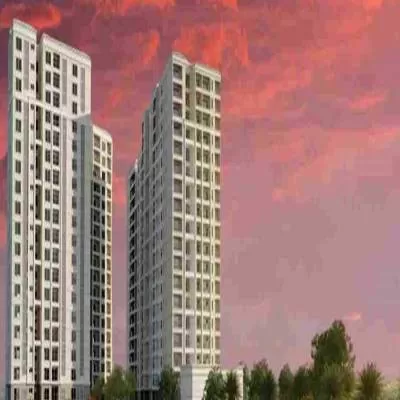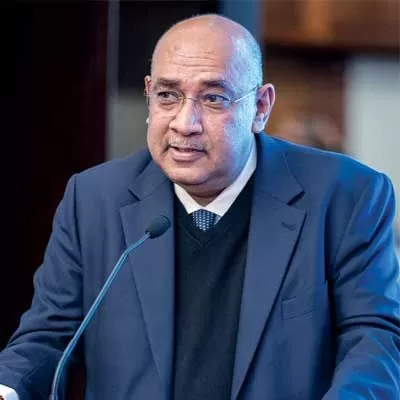- Home
- Infrastructure Urban
- ECONOMY & POLICY
- Affordable housing presents a USD 11.8 billion opportunity in top indian cities

Affordable housing presents a USD 11.8 billion opportunity in top indian cities
In a report released in conjunction with CREDAI, at NATCON 2015 held in Istanbul, Turkey, Cushman & Wakefield pegs the demand for affordable housing at 535,400 units across Delhi-NCR, Mumbai (MMR), Bengaluru, Chennai, Hyderabad, Kolkata and Pune. This is based on the demand for units in the price range of INR 20-50 lakhs in these cities, except for Mumbai where the range is between INR 50-70 lakhs. This spells immense opportunity for the private sector to explore urban affordable housing in India through various models, which can be profitable for all stakeholders.
“Urban affordable housing has long been neglected in India due to various reasons such as high land prices, delays in getting approvals and low margins in the segment. Now with renewed focus from government, we expect this segment to gather momentum going forward,” says Sanjay Dutt, Executive Managing Director, South Asia, Cushman & Wakefield. While overall new launches rose a tepid 14% in the April-June quarter, compared to the previous quarter, developers launched 7,000 affordable units in the latest quarter, an increase of 320% on a quarter-on-quarter basis. Around 60% of the total units were launched in the National Capital Region alone, comprising Delhi, Gurgaon, Noida and Faridabad, during the second quarter.
“The residential market can offer a multitude of opportunities if innovative housing models that would address challenges of specific target segments are adopted. The Affordable housing segment that is now backed by a strong mandate of the central government currently witnesses a demand-supply mismatch and it is imperative that public-private-partnerships be given an impetus to achieve desired scale,” says Mr. Getamber Anand, President, CREDAI National.
To fulfill the need for low-cost housing, the government needs to promote private sector involvement that would play a significant role in bridging the current deficit of low-cost housing in urban areas. Till now, private players have shied away from this segment, due to low margins. Incentivizing the sector by making land available, reducing raw material prices, providing additional Floor space index (FSI) for such developments etc. are bound to give a thrust to development of low cost housing units. Further, by providing tax exemptions and thereby reducing developmental costs, the government would be able to lure private developers. Ideally, the public sector should look at aggregating land for project, whilst the private sector should focus on the construction, financing the project, etc. Additionally, private sector participation, particularly in a public private partnership (PPP) model would also enable timely approvals.
The report goes onto identify certain residential segments that are untapped and present opportunities to developers. It also explores housing models that could be implemented to address challenges such as paucity of land at suitable price levels, inadequate supply of low-cost housing. Technological innovations in construction and advancements that make homes more efficient, yet sustainable at the same time, have also been discussed. Technological advancements to enable Prefabrication method of construction, development of Smart homes, Passive houses etc. have been presented in the report, outlining the opportunities and challenges while implementing them. It also stresses on the need for developers to engage in specialized housing models such as student housing, senior living, catering to specific demographics to ensure better efficiencies for developers.
Speaking at the launch of this report, Mr. Getamber Anand, said, “This report, launched in the midst of 1000 attending members at NATCON 2015, can be used by policy makers in the Government to enlighten all stakeholders, who will play an important role in unleashing housing stock in India.”
Global real estate consultant Cushman & Wakefield estimates that the urban affordable housing segment currently presents a USD 11.8 billion (INR 75,800 crore) opportunity for the private sector. At a time when the Central government is placing strong emphasis on the ‘Housing for All by 2022’ initiative, Cushman and Wakefield expects the strong demand pipeline in the top seven cities to drive the private sector’s participation in creating affordable housing. In a report released in conjunction with CREDAI, at NATCON 2015 held in Istanbul, Turkey, Cushman & Wakefield pegs the demand for affordable housing at 535,400 units across Delhi-NCR, Mumbai (MMR), Bengaluru, Chennai, Hyderabad, Kolkata and Pune. This is based on the demand for units in the price range of INR 20-50 lakhs in these cities, except for Mumbai where the range is between INR 50-70 lakhs. This spells immense opportunity for the private sector to explore urban affordable housing in India through various models, which can be profitable for all stakeholders. “Urban affordable housing has long been neglected in India due to various reasons such as high land prices, delays in getting approvals and low margins in the segment. Now with renewed focus from government, we expect this segment to gather momentum going forward,” says Sanjay Dutt, Executive Managing Director, South Asia, Cushman & Wakefield. While overall new launches rose a tepid 14% in the April-June quarter, compared to the previous quarter, developers launched 7,000 affordable units in the latest quarter, an increase of 320% on a quarter-on-quarter basis. Around 60% of the total units were launched in the National Capital Region alone, comprising Delhi, Gurgaon, Noida and Faridabad, during the second quarter. “The residential market can offer a multitude of opportunities if innovative housing models that would address challenges of specific target segments are adopted. The Affordable housing segment that is now backed by a strong mandate of the central government currently witnesses a demand-supply mismatch and it is imperative that public-private-partnerships be given an impetus to achieve desired scale,” says Mr. Getamber Anand, President, CREDAI National. To fulfill the need for low-cost housing, the government needs to promote private sector involvement that would play a significant role in bridging the current deficit of low-cost housing in urban areas. Till now, private players have shied away from this segment, due to low margins. Incentivizing the sector by making land available, reducing raw material prices, providing additional Floor space index (FSI) for such developments etc. are bound to give a thrust to development of low cost housing units. Further, by providing tax exemptions and thereby reducing developmental costs, the government would be able to lure private developers. Ideally, the public sector should look at aggregating land for project, whilst the private sector should focus on the construction, financing the project, etc. Additionally, private sector participation, particularly in a public private partnership (PPP) model would also enable timely approvals. The report goes onto identify certain residential segments that are untapped and present opportunities to developers. It also explores housing models that could be implemented to address challenges such as paucity of land at suitable price levels, inadequate supply of low-cost housing. Technological innovations in construction and advancements that make homes more efficient, yet sustainable at the same time, have also been discussed. Technological advancements to enable Prefabrication method of construction, development of Smart homes, Passive houses etc. have been presented in the report, outlining the opportunities and challenges while implementing them. It also stresses on the need for developers to engage in specialized housing models such as student housing, senior living, catering to specific demographics to ensure better efficiencies for developers. Speaking at the launch of this report, Mr. Getamber Anand, said, “This report, launched in the midst of 1000 attending members at NATCON 2015, can be used by policy makers in the Government to enlighten all stakeholders, who will play an important role in unleashing housing stock in India.”






















